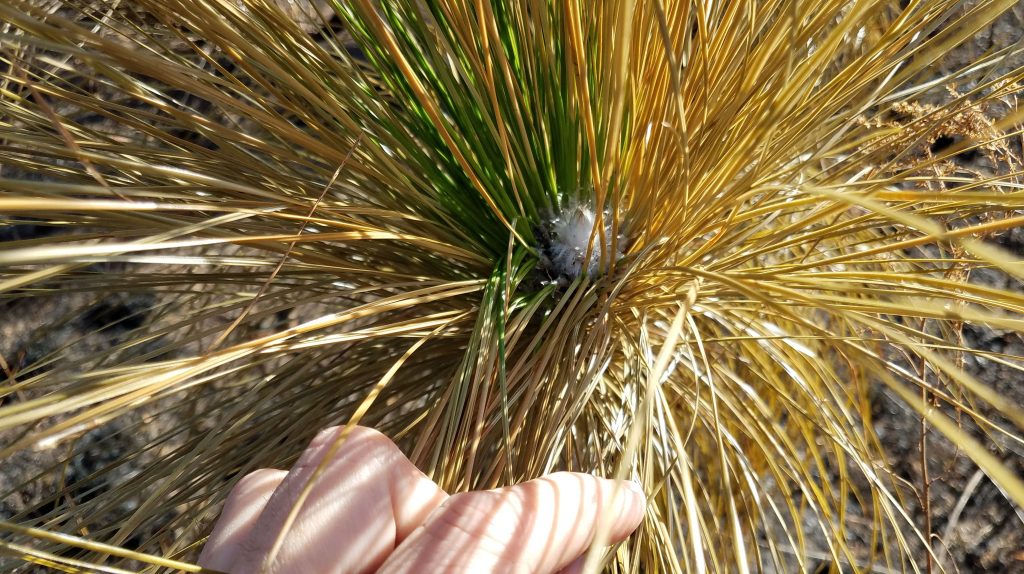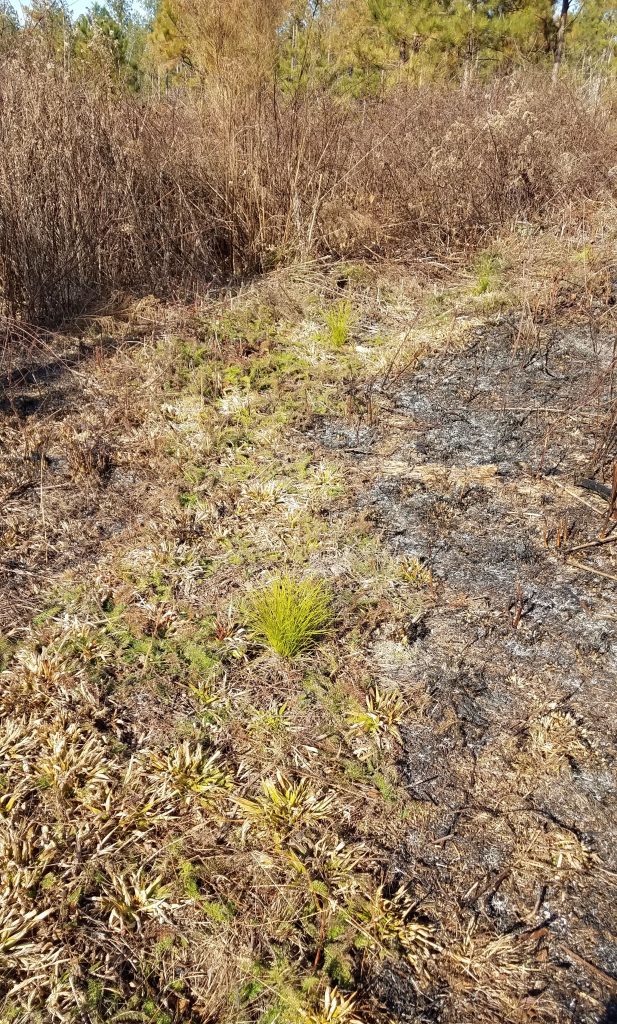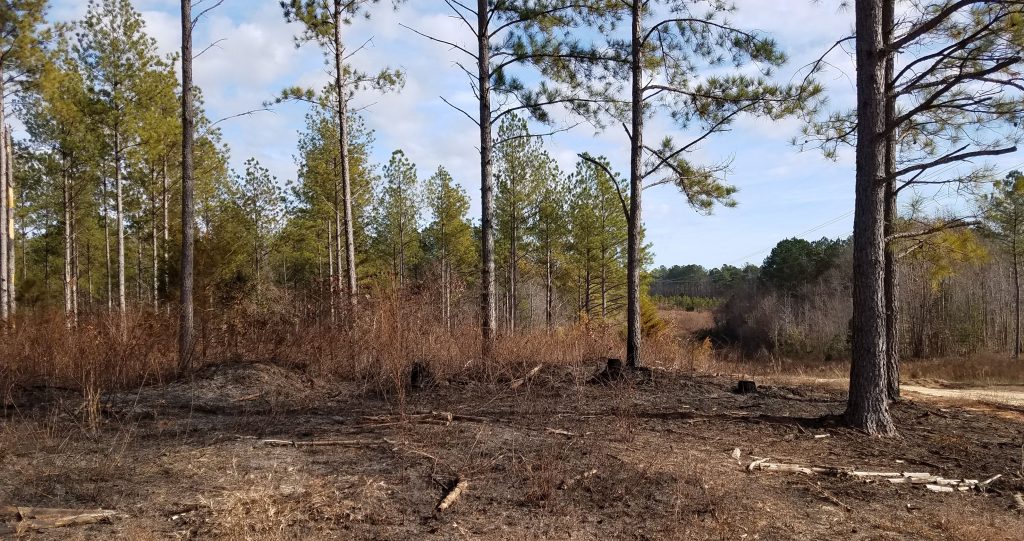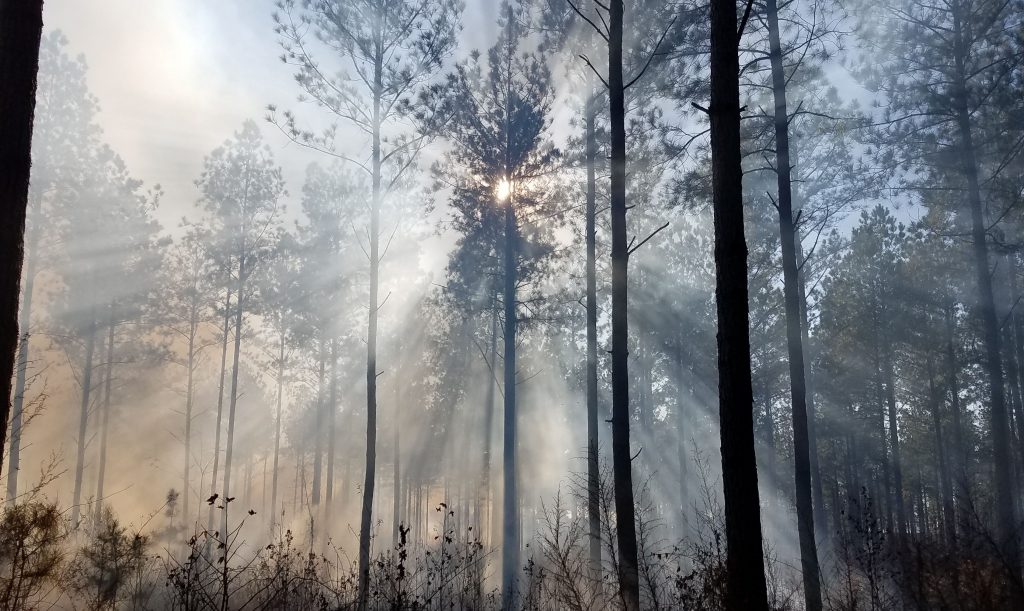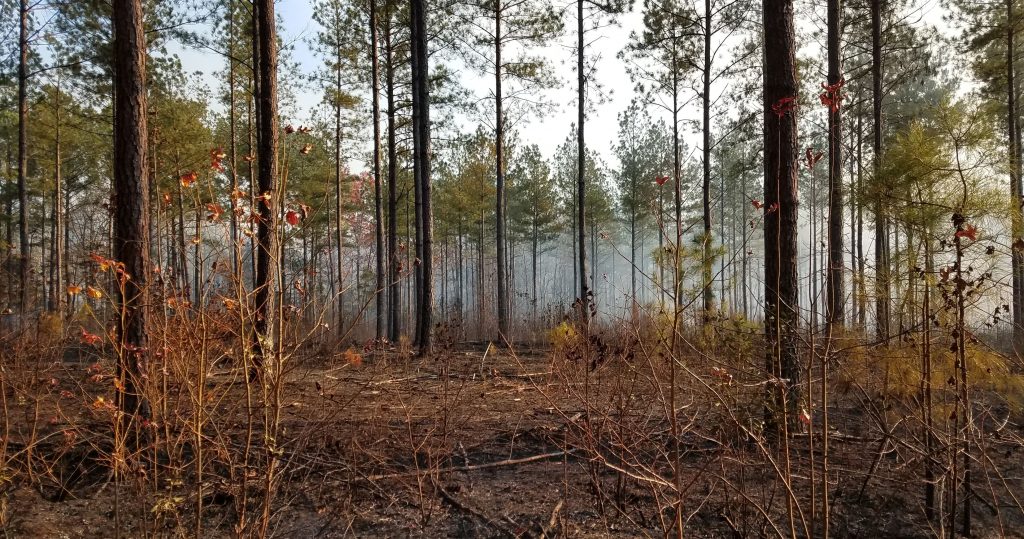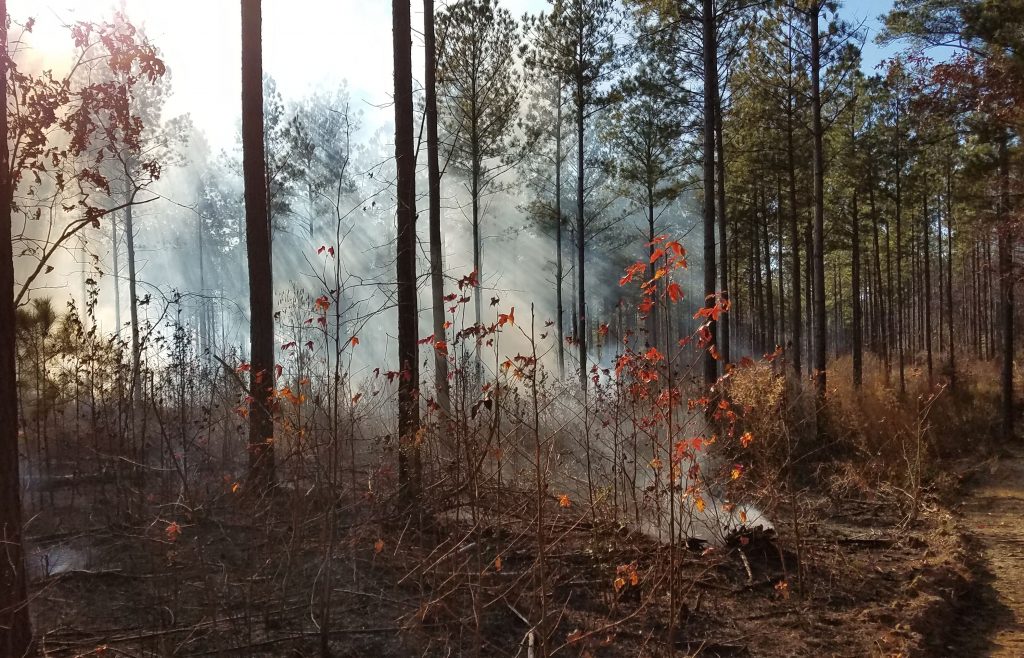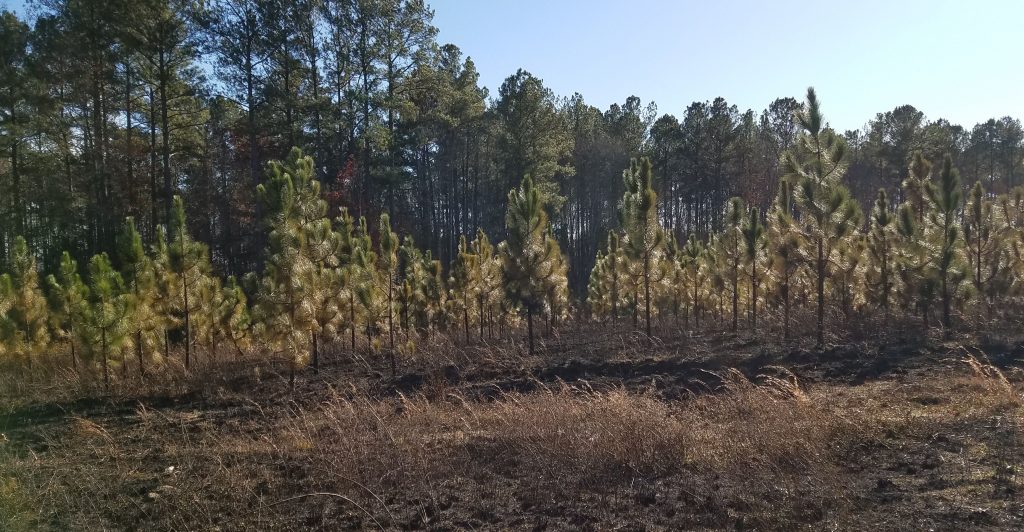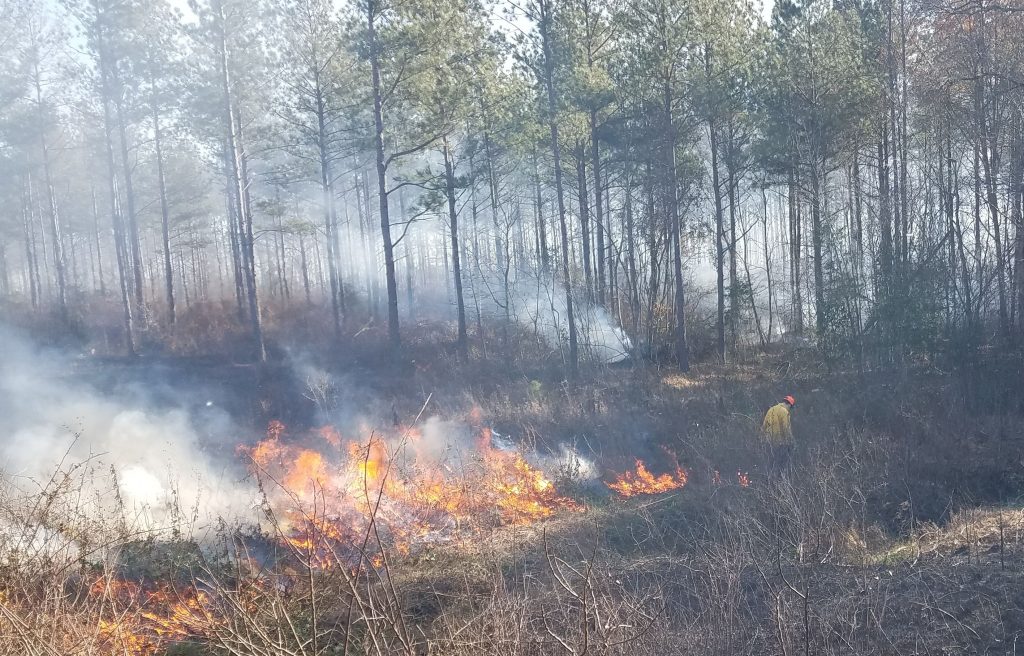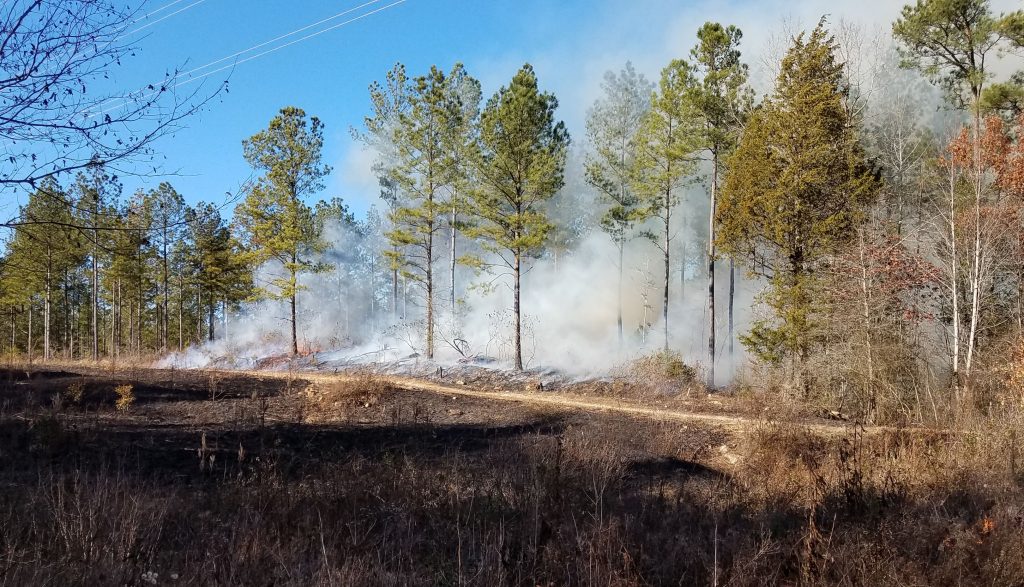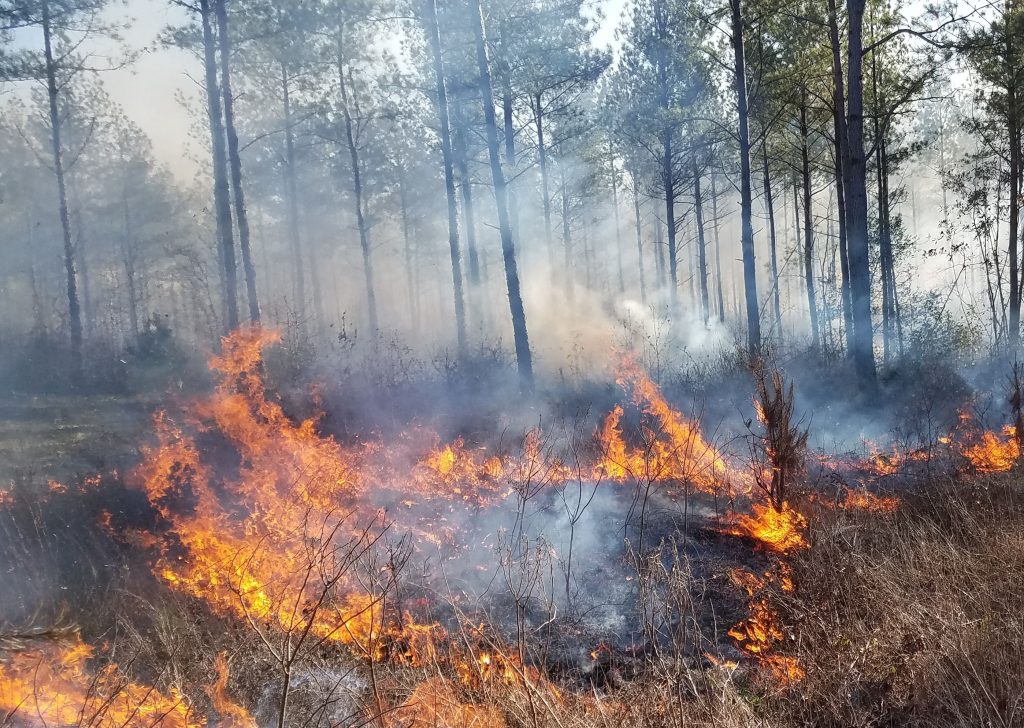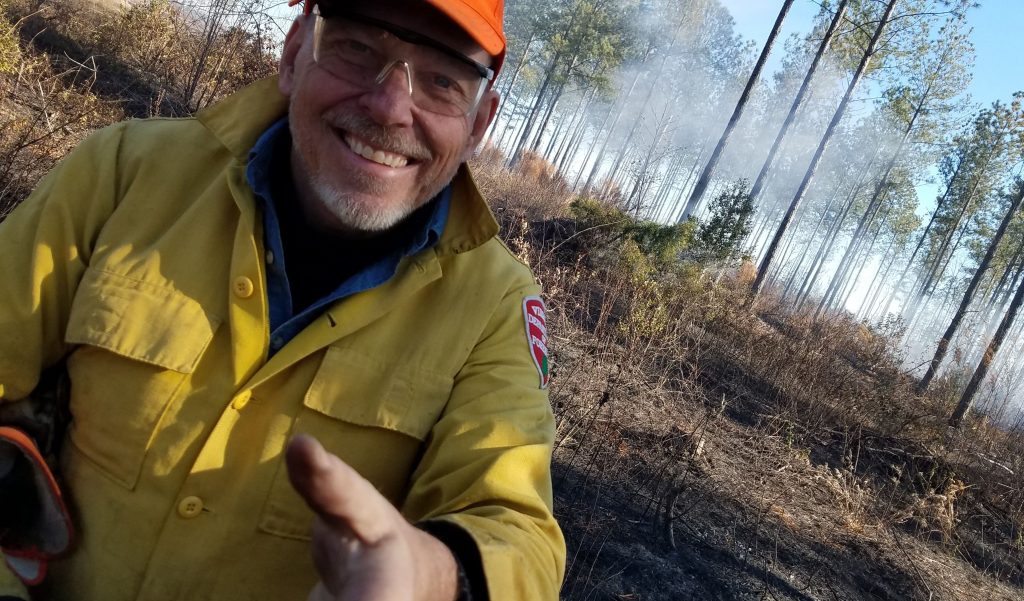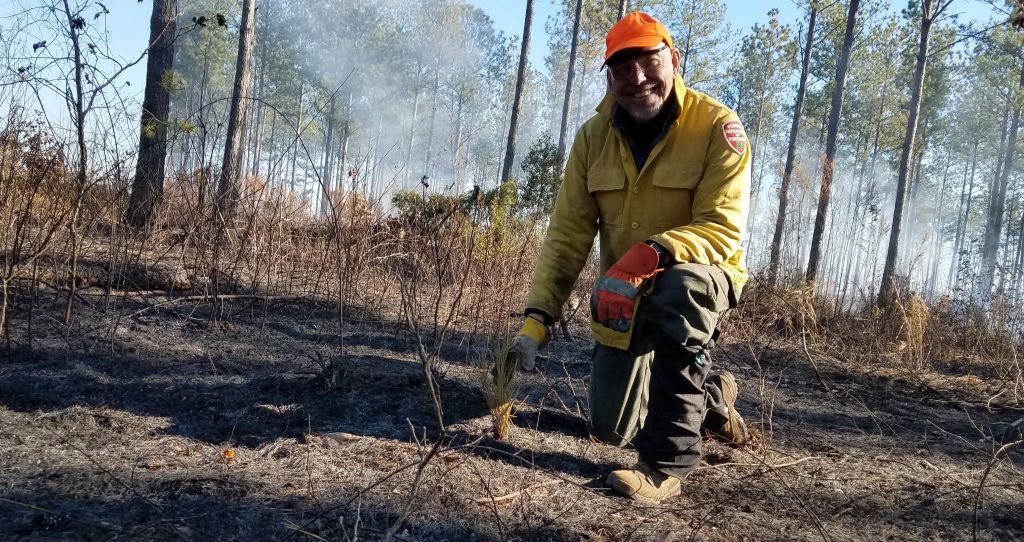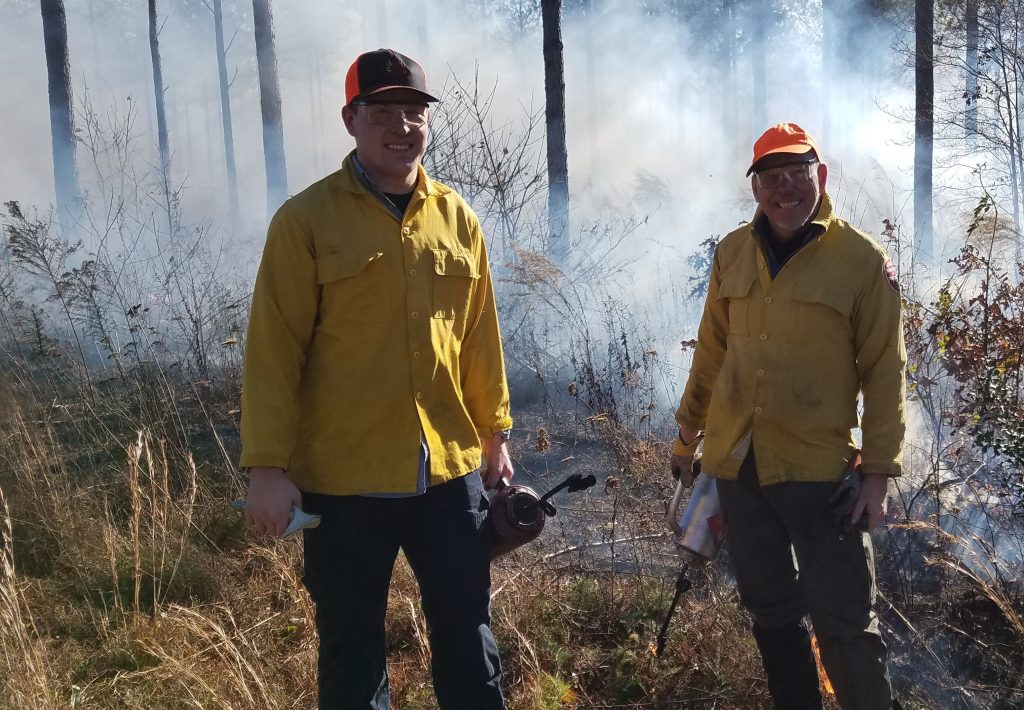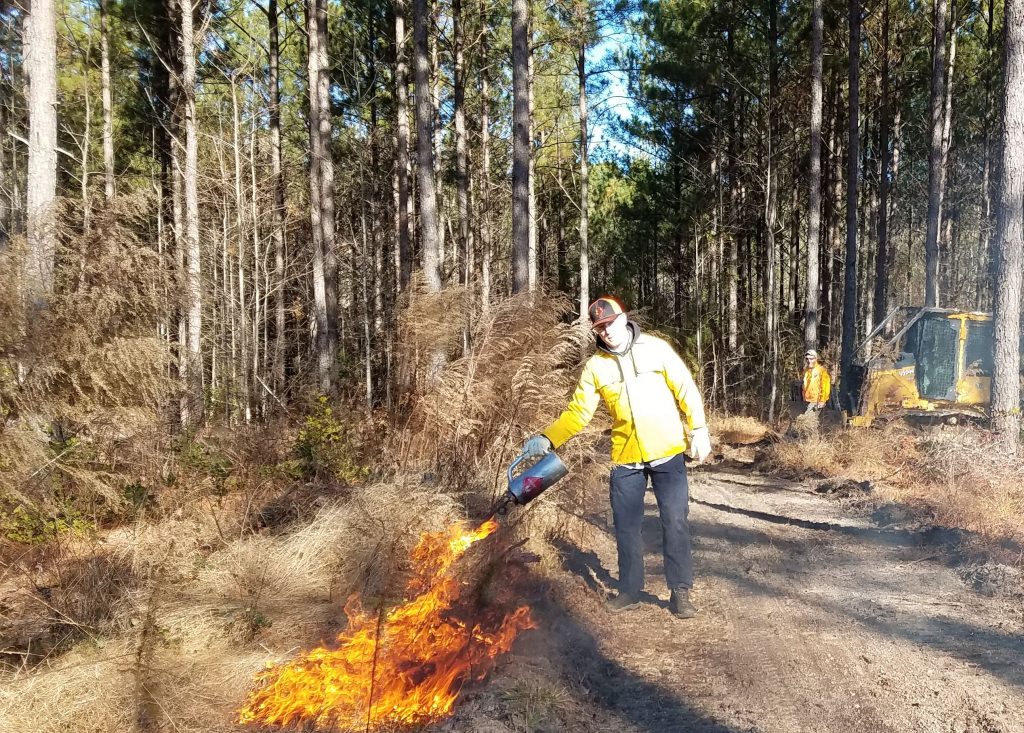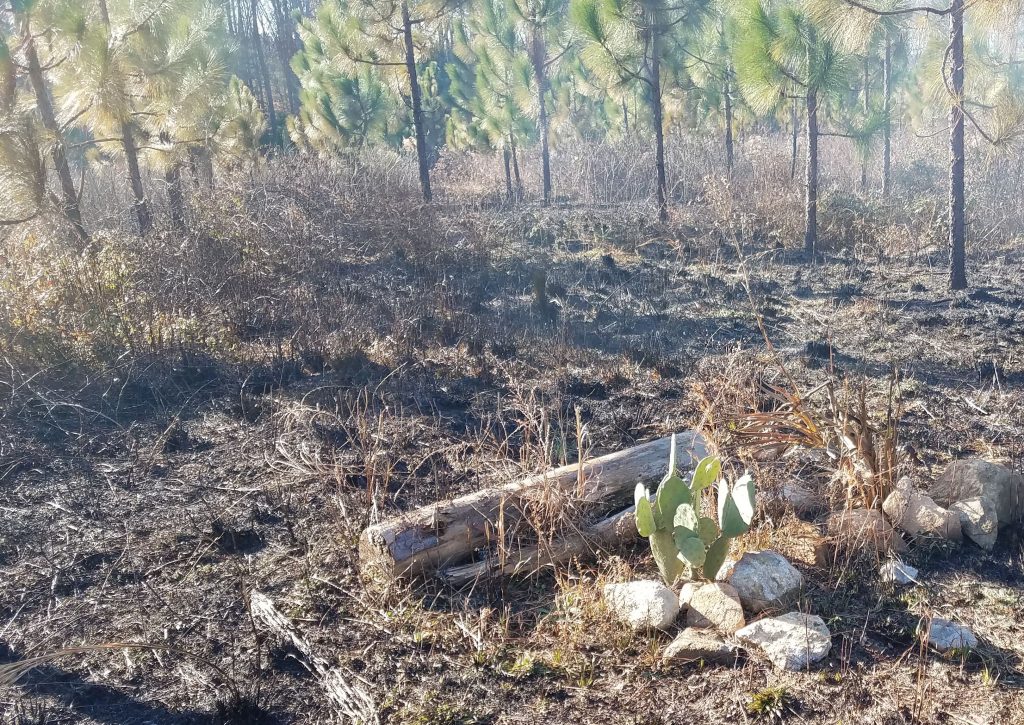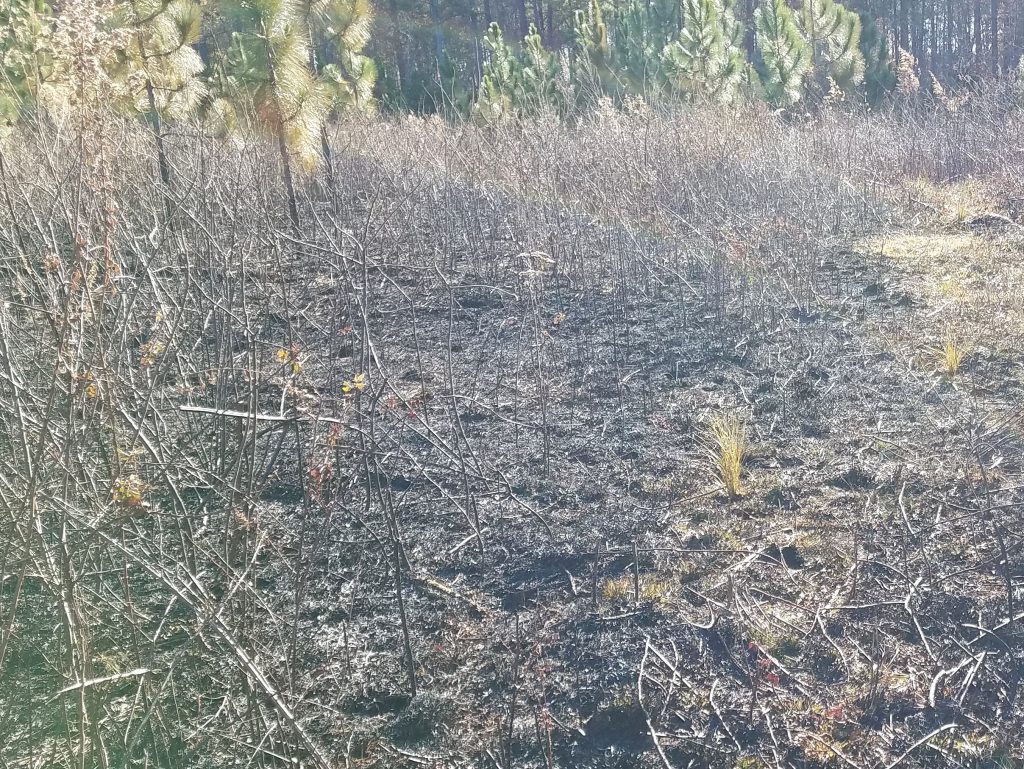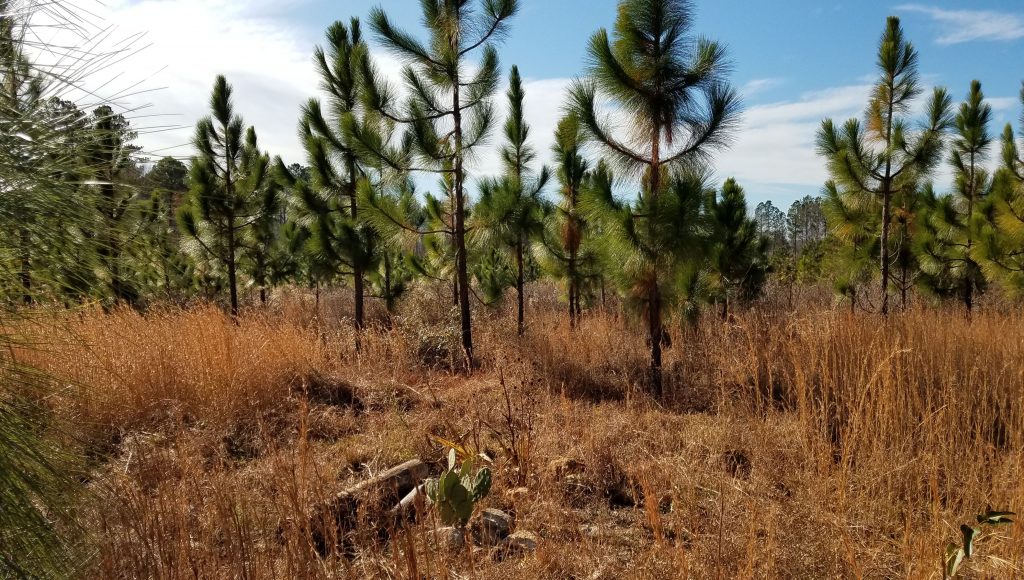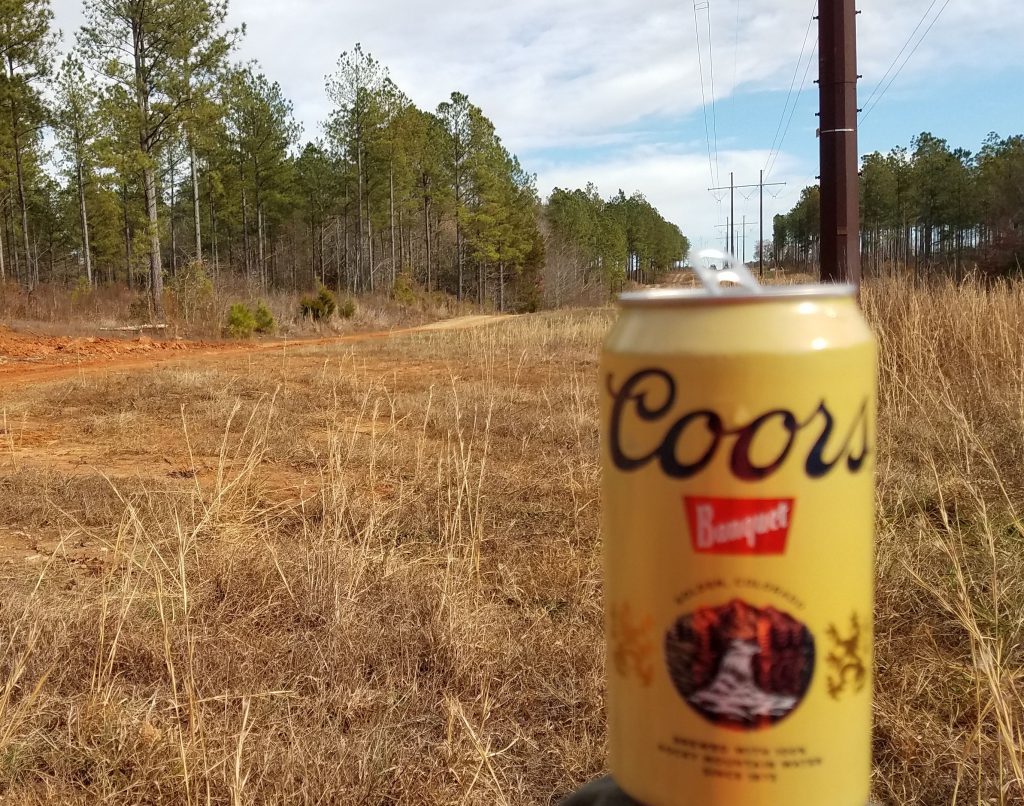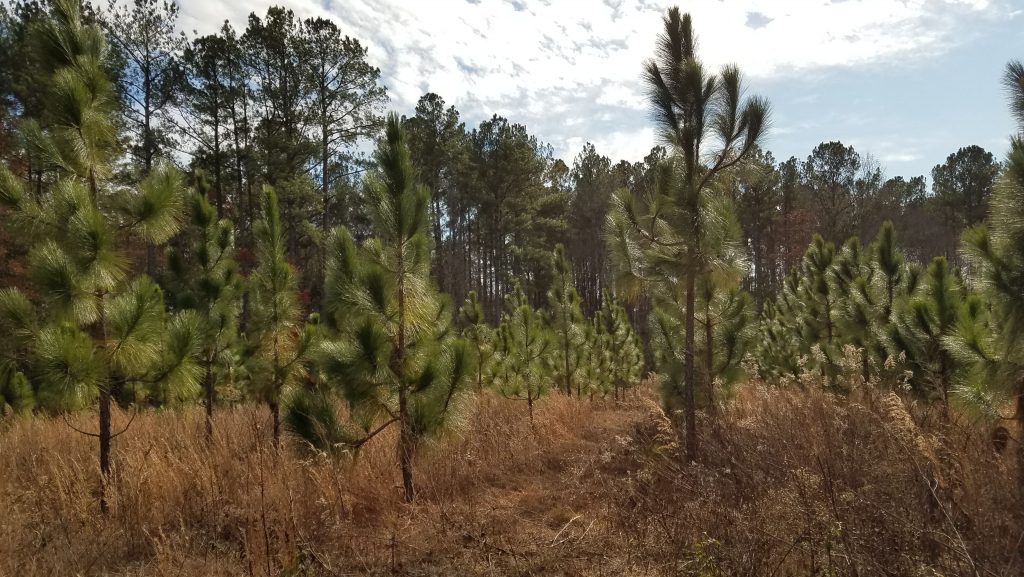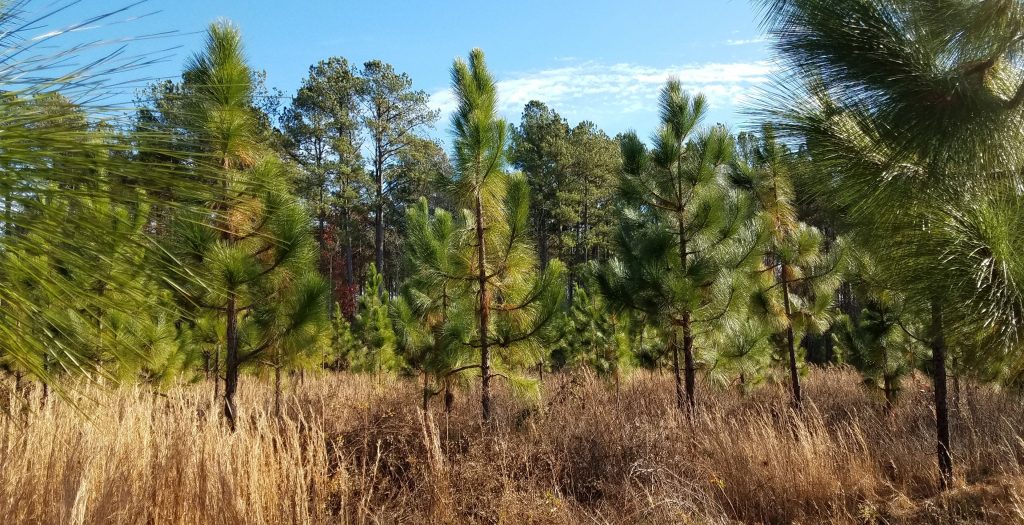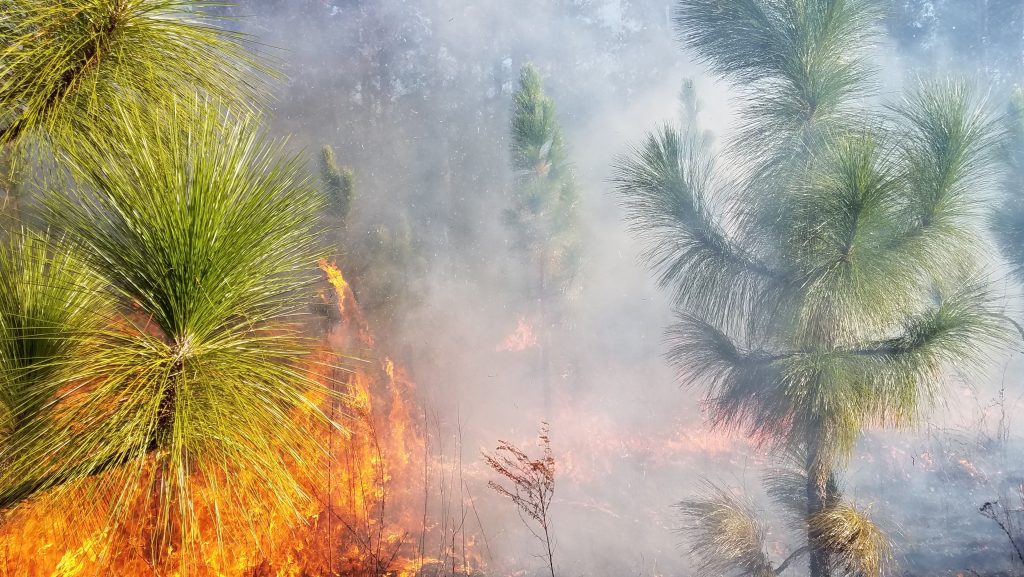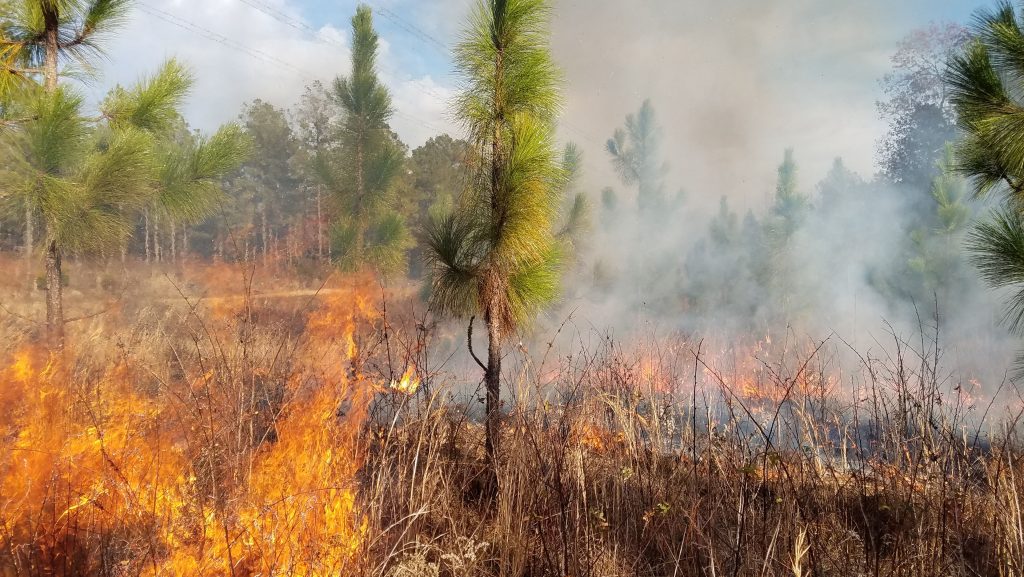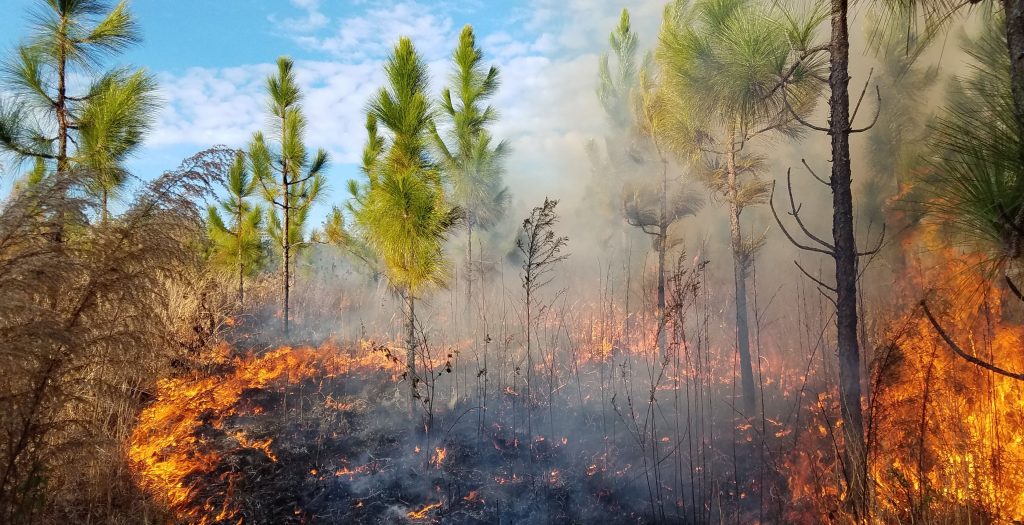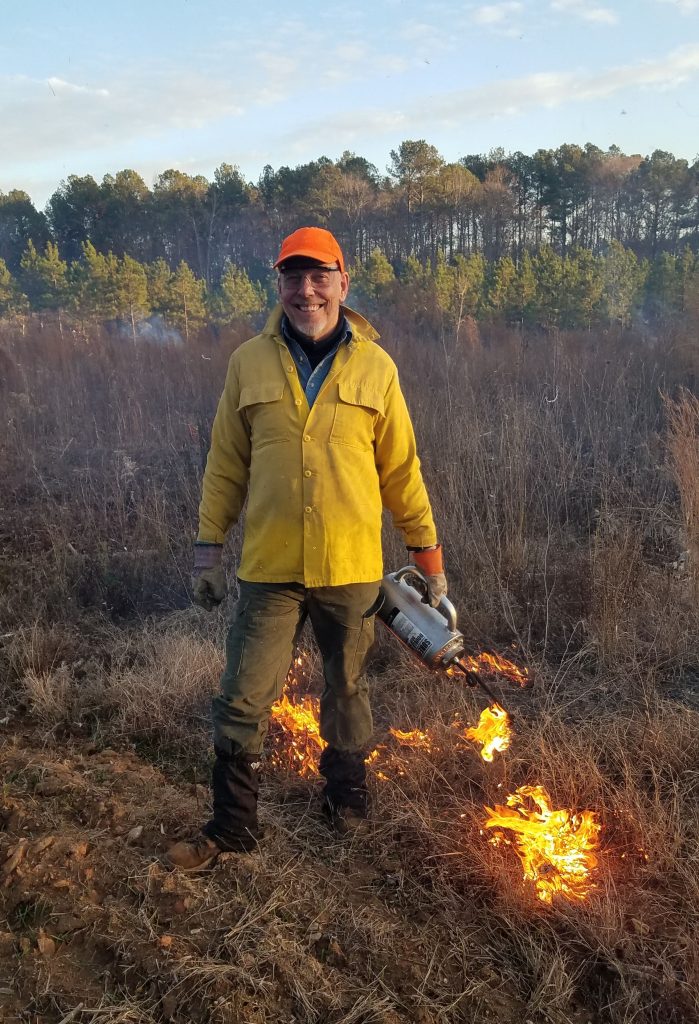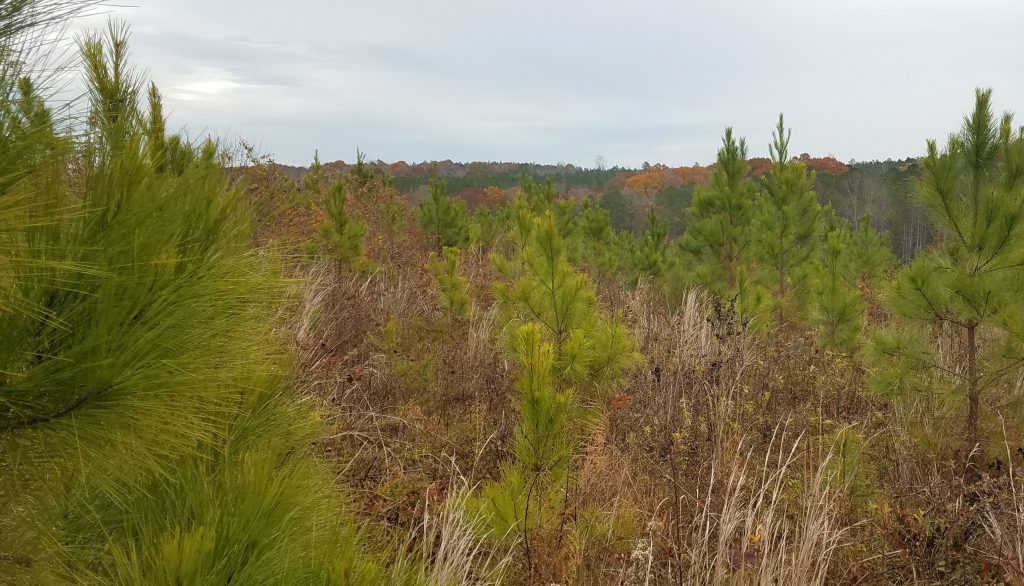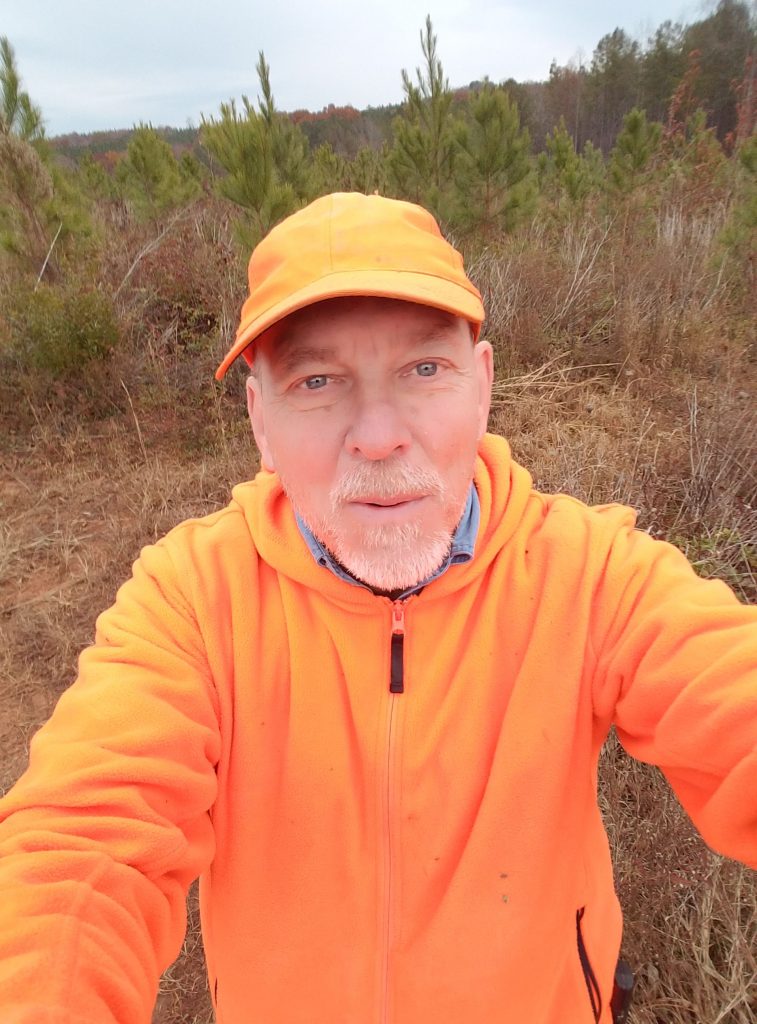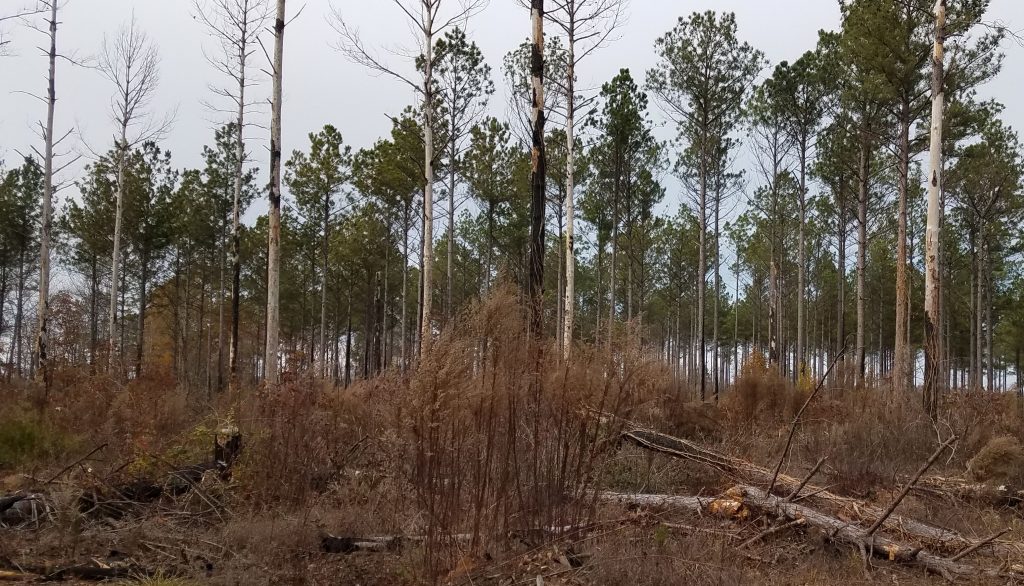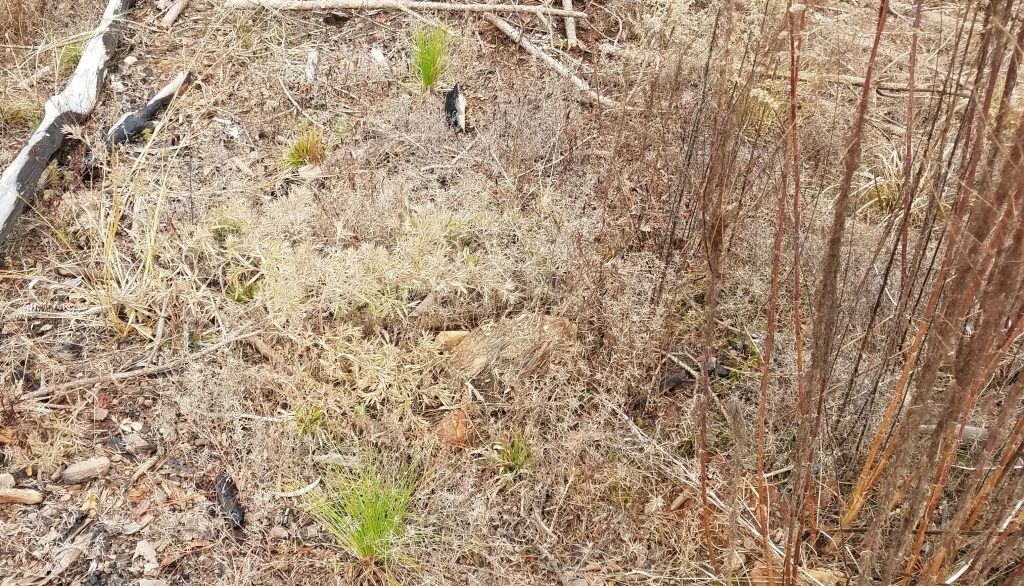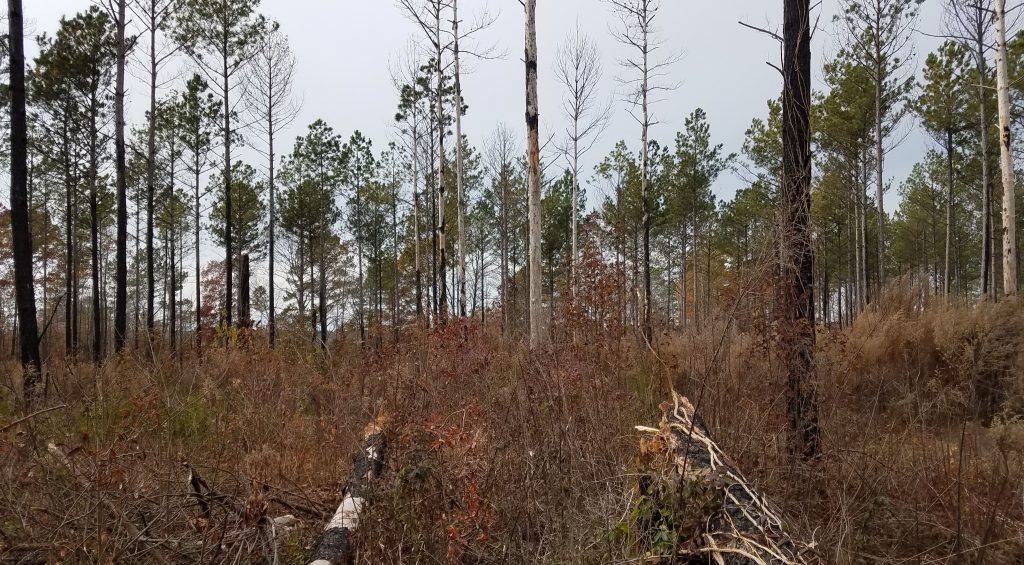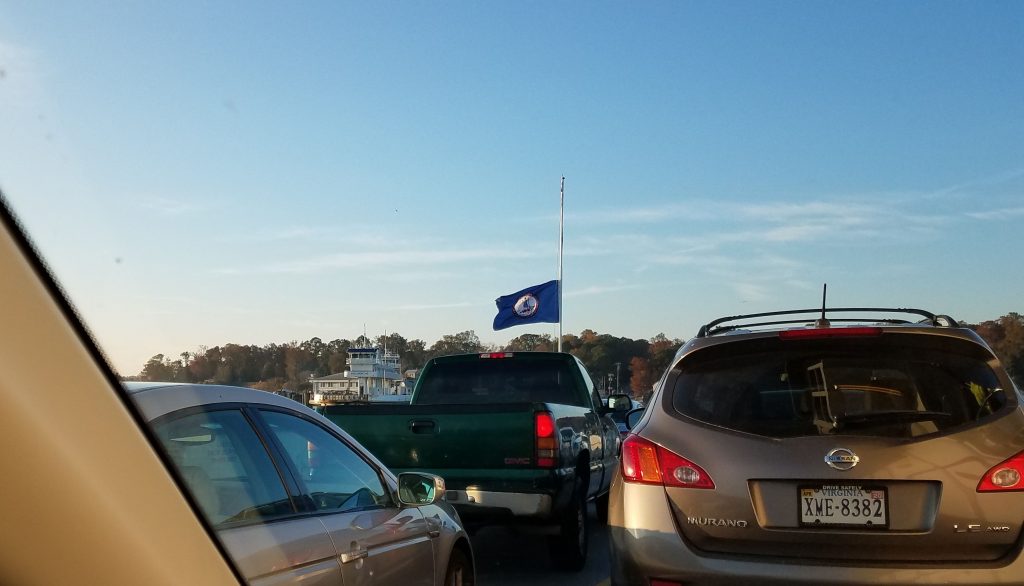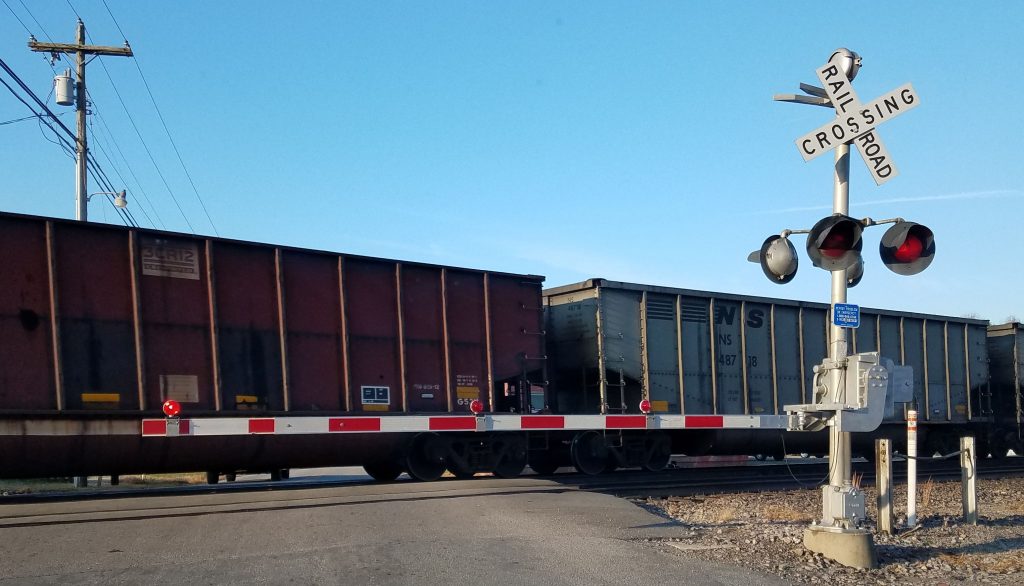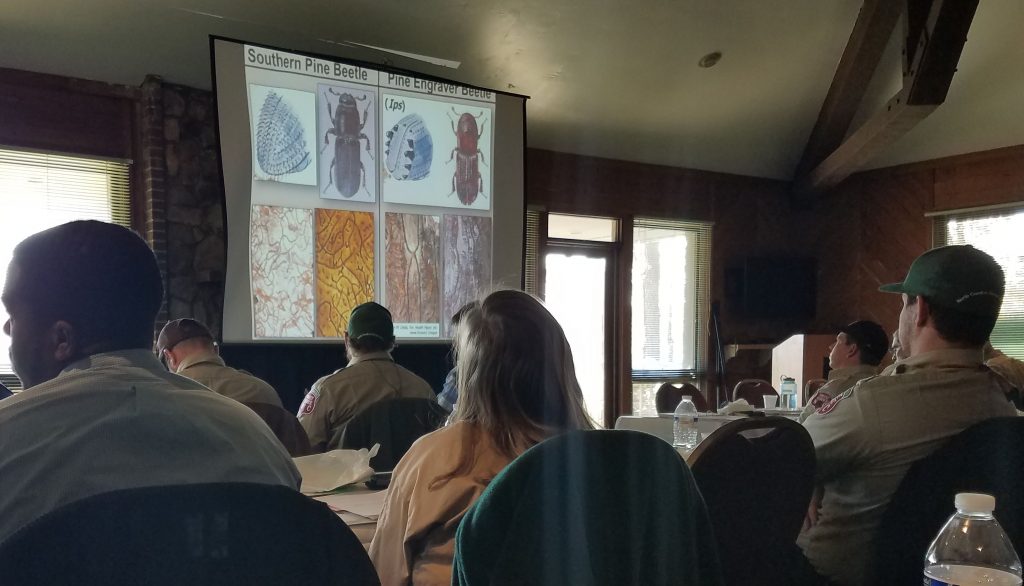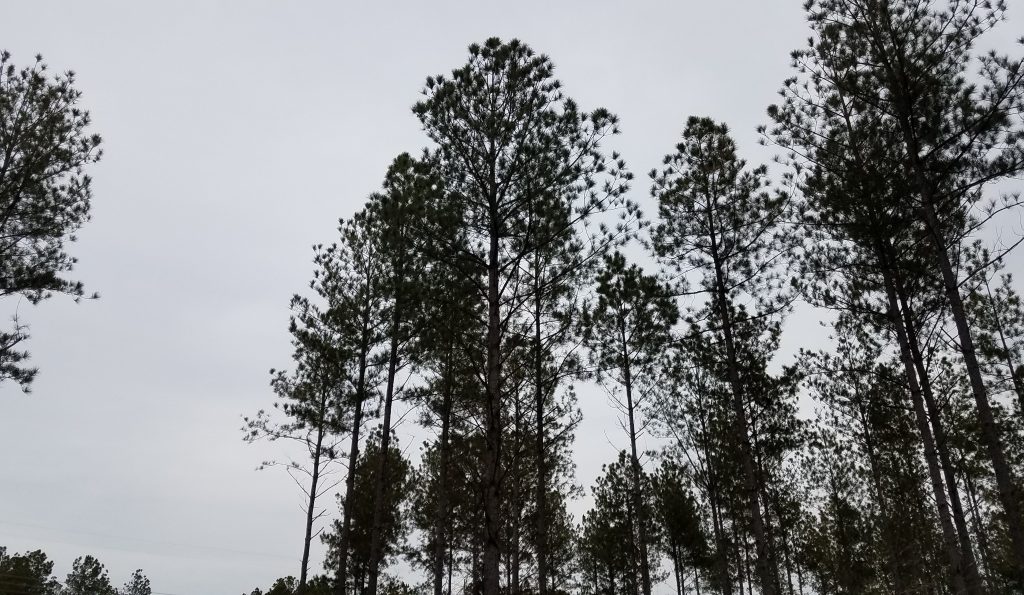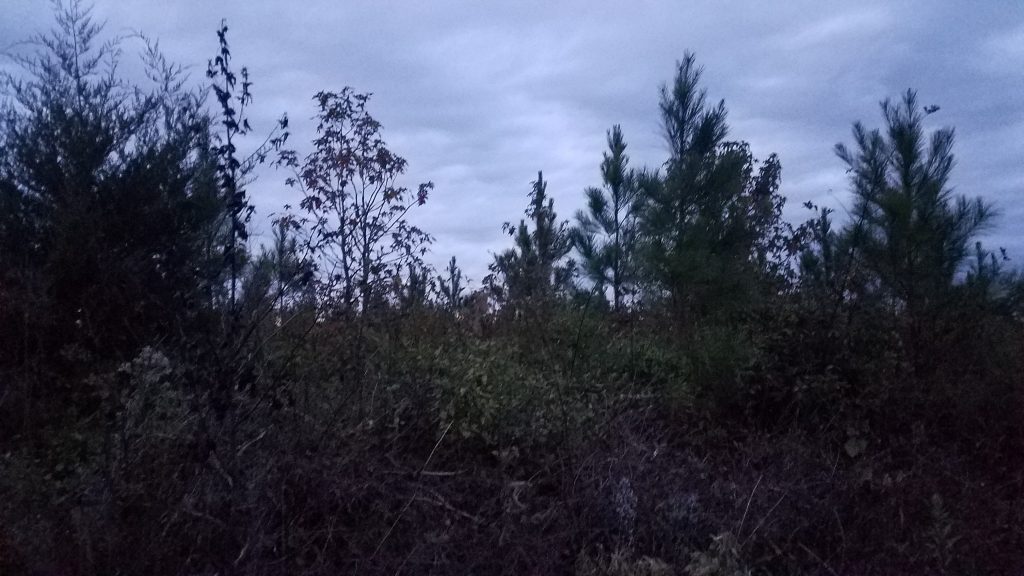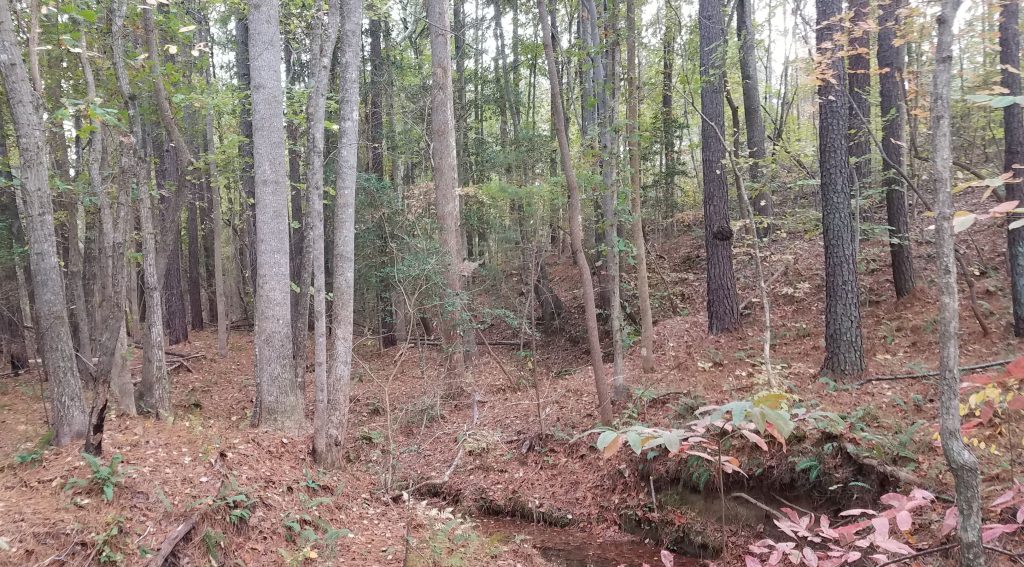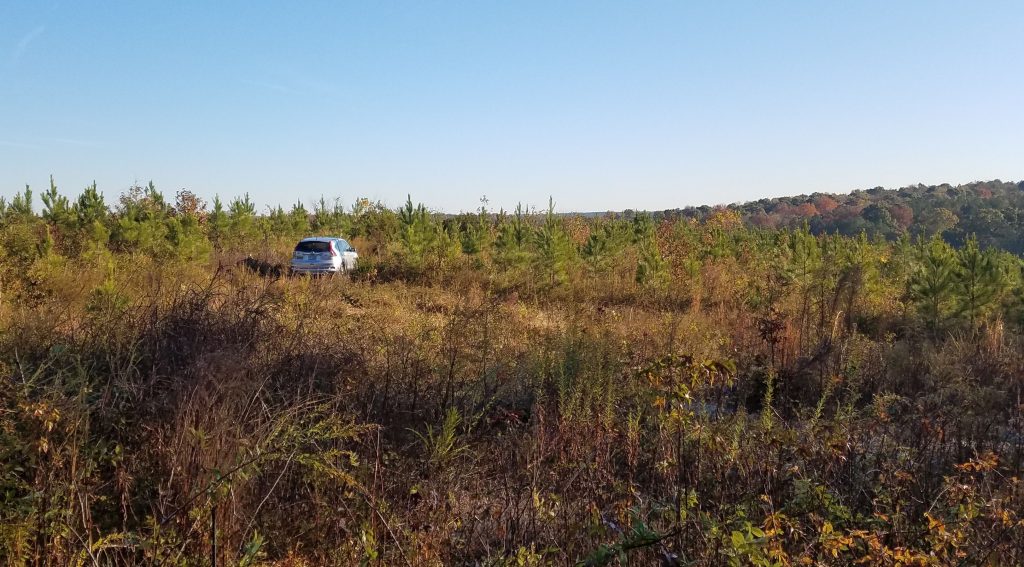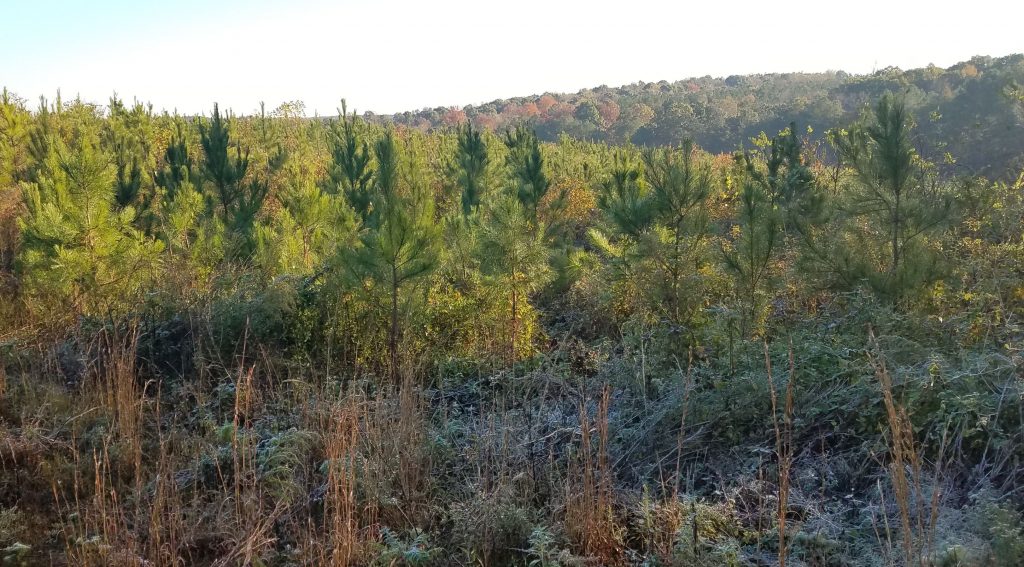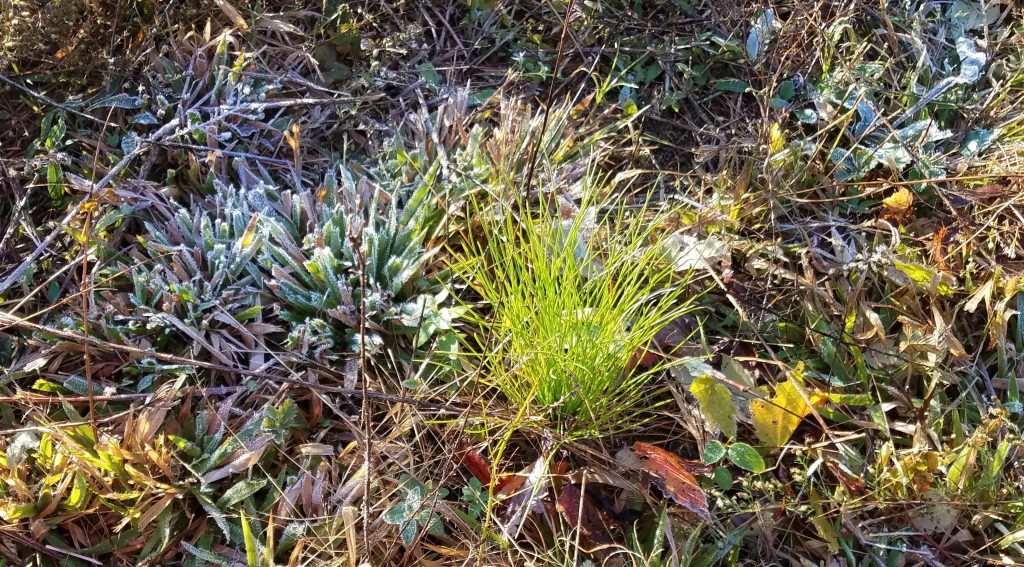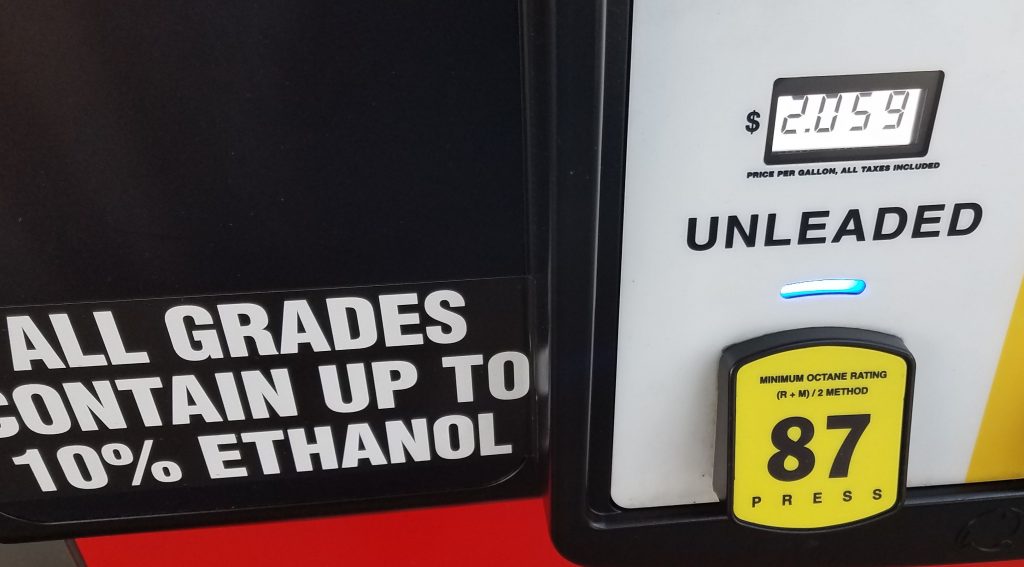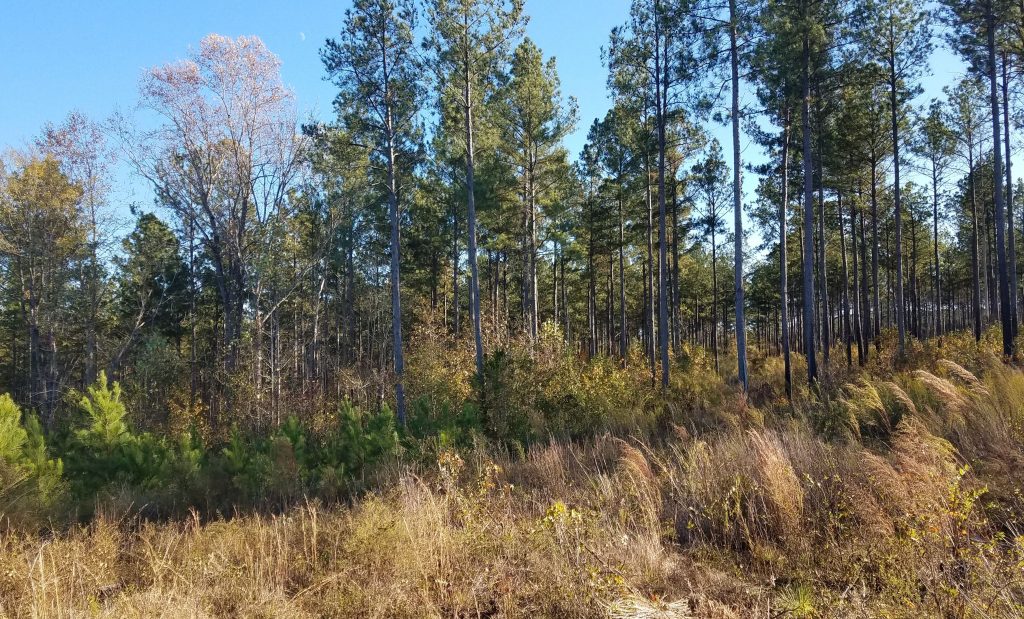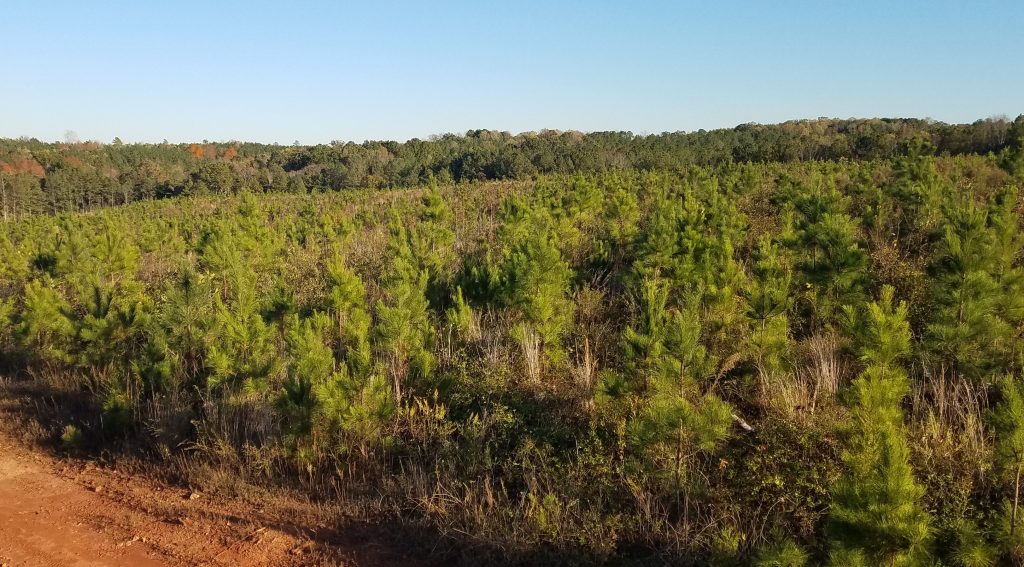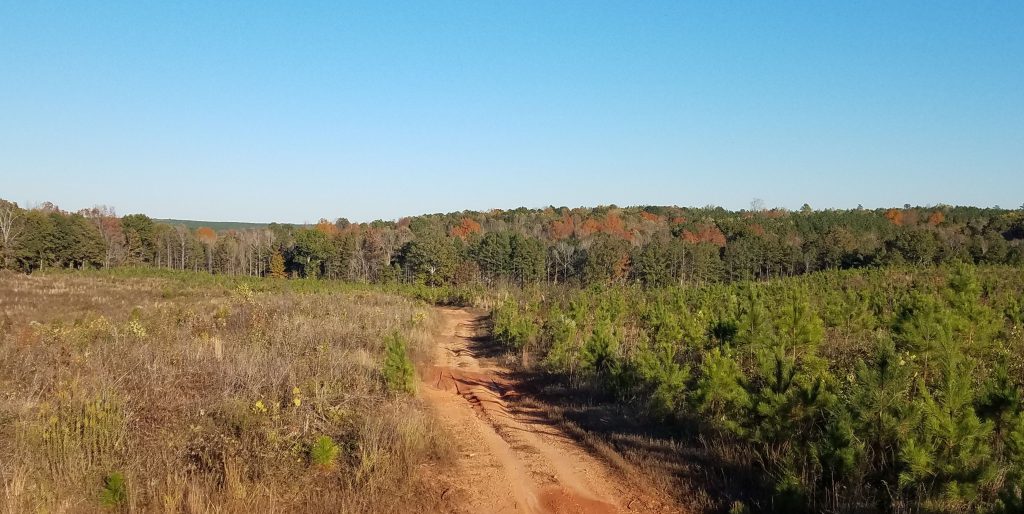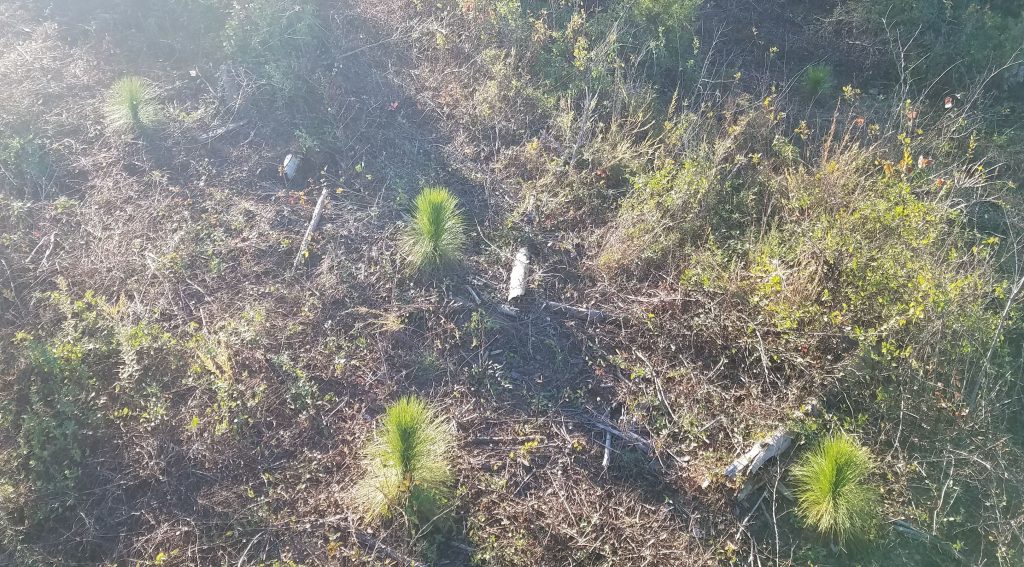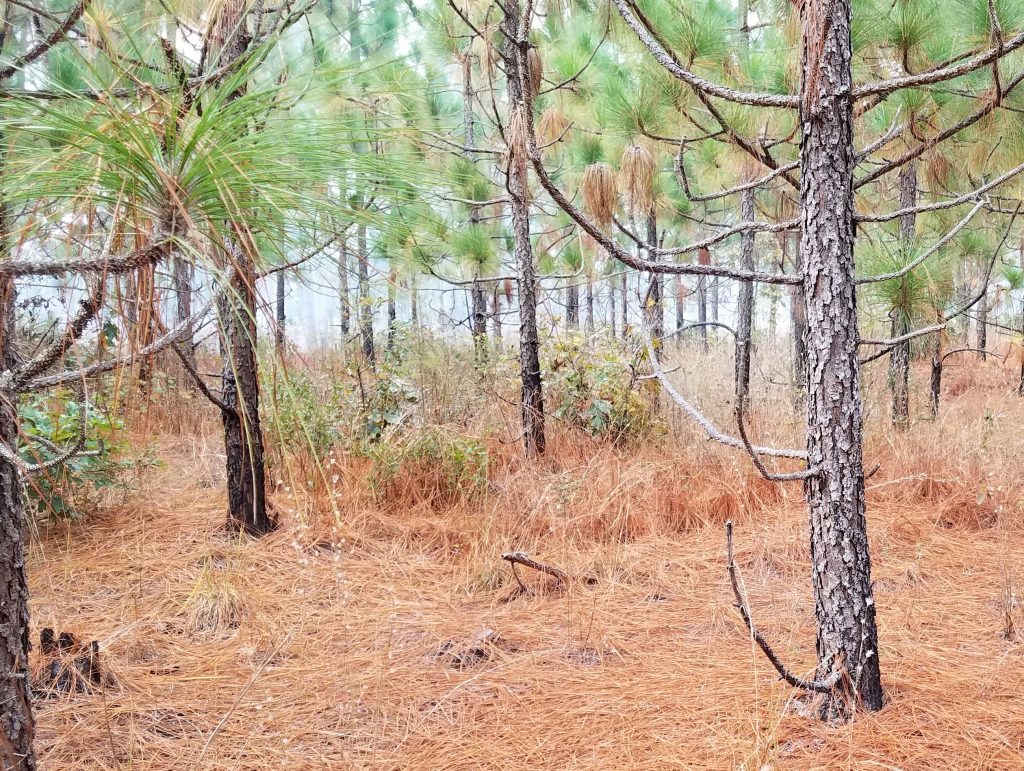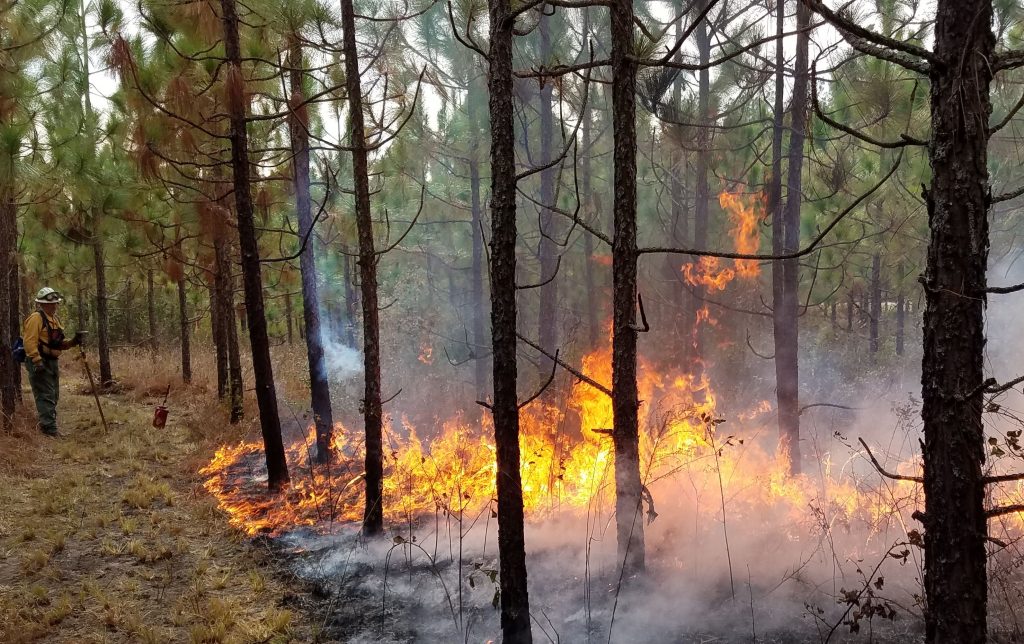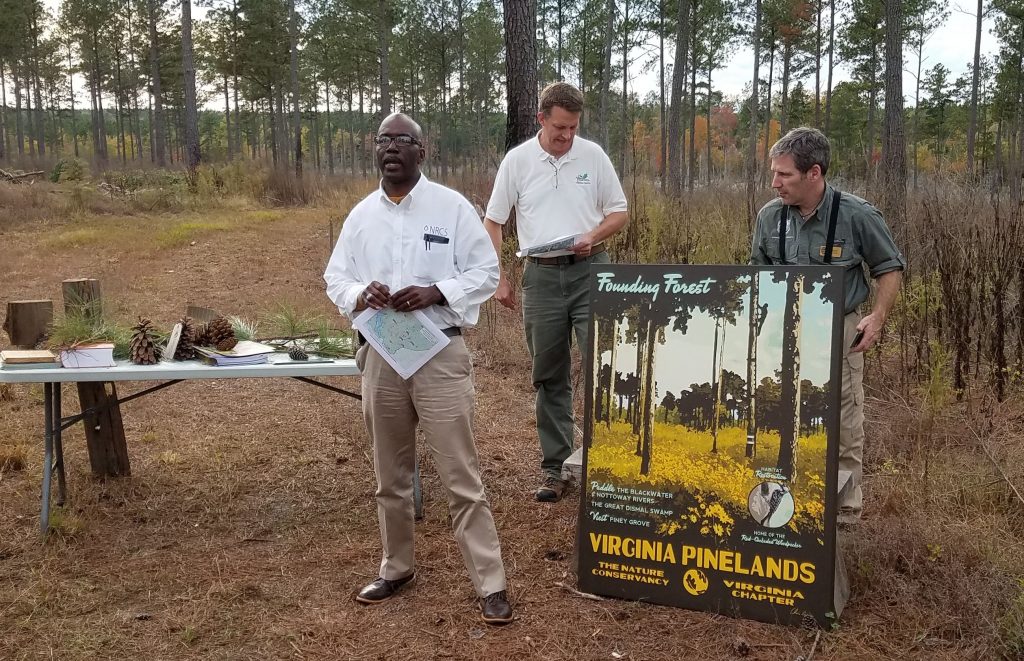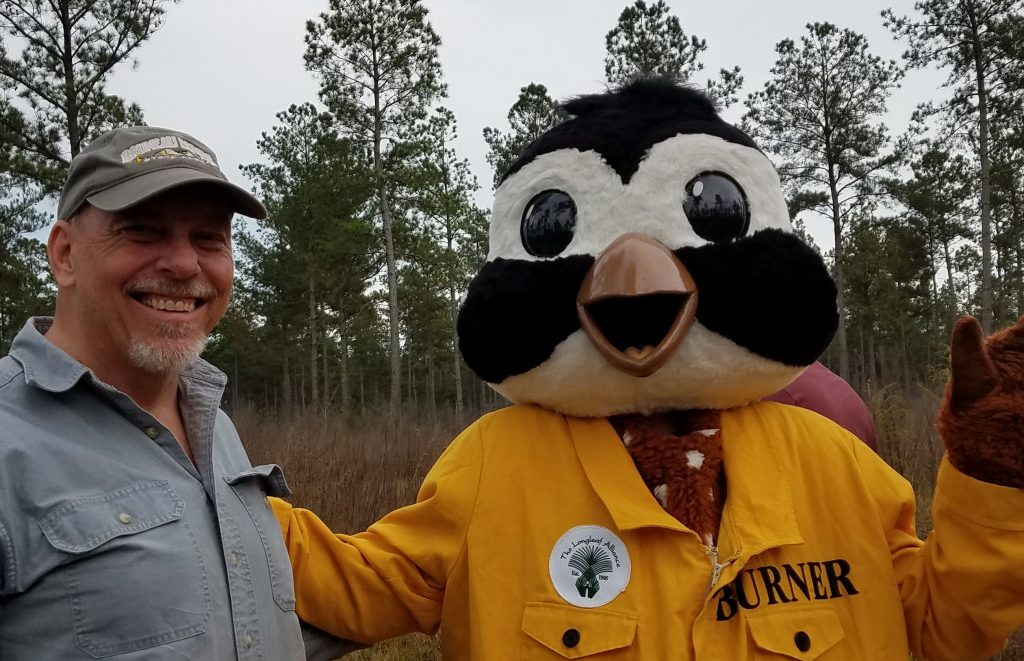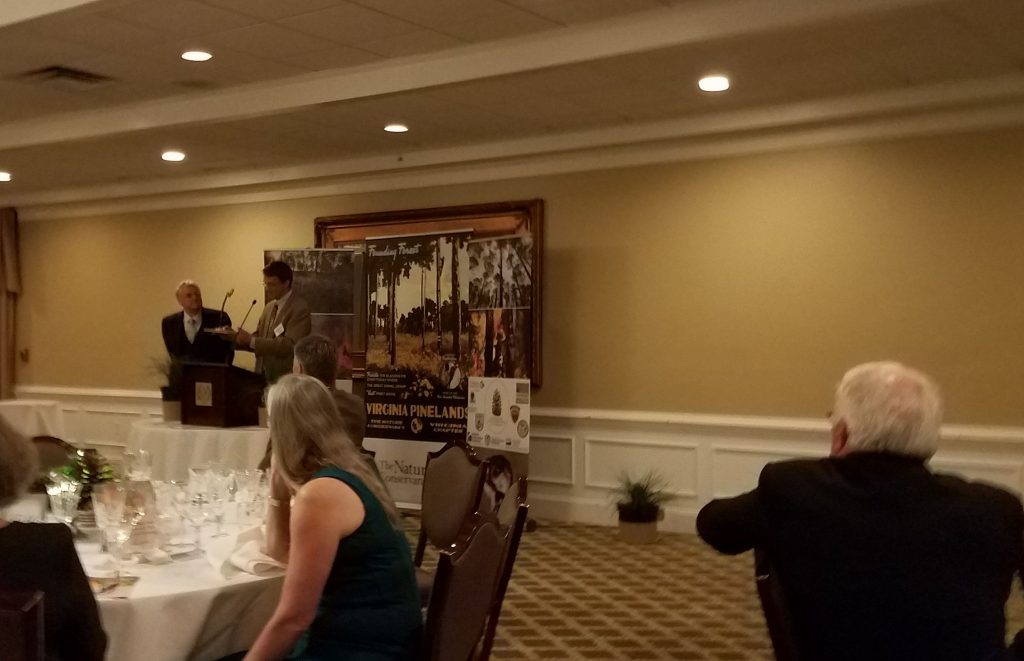On my way to pick up the first tranche of this year’s longleaf. I stopped off at Freeman to check out the fire results. It is odd. Some places burned a lot and others not at all. It seems like there is dry grass that should have burned easily next to burned areas.
The fire top killed brambles, but did not burn them away, so it is going to be hard going planting in some of the patches. I am going to be planting all next week and I will push through, but I will use my cutter to make easier paths for the kids when they come to plant. I want them to have good memories. They can get used to the brambles gradually, as I did.
Burning is good, but it always scares me. I inspected my longleaf most carefully. Some of the needles are singed and will fall off. I checked for the buds on some of the lower branches, figuring that that was most likely to be killed and that higher ones would be better. I found that middle was still green and will be growing, so I assume the tops are good.
Longleaf is fire adapted. The needles singe, but when they heat up they release humidity that protects the terminal buds. The buds are what count. If the buds are alive, the tree will grow again
My grass stage longleaf also have green centers. I might lose a few, but I think most will be okay.
First picture is the green center of one of the longleaf branches. Next is the burn-over of the 2012 pines and after that some of the grass stage nearby. Penultimate shows the burning under 1996 loblolly and the grassy hills. I planted some clover on the fire line bare dirt. I know that is not “native” but it is pollinator habitat and generally a good plant for that purpose. I scatters some of the native seeds that I gathers onto the burned areas. I will plant longleaf in the clearings among the loblolly. Have to push through those brambles.
My last picture are rude motorcycle guys. they parked their bikes blocking the pumps. They were hanging around inside the Pilot. I was “scandalized” but didn’t have the inclination or courage to confront them. There were other pumps available and I filled up there.
Reminds me of the joke about the truck driver and the bike gang.
A truck driver is having his lunch when a biker gang comes in and starts to harass him. They take some of his food, spill his coffee. He just finishes, pays for his food and leaves.
The lead biker says to the waitress, Not much of a man, is he?” The waitress replies, “Not much of a driver either. He just backed over a bunch of motorcycles.”

